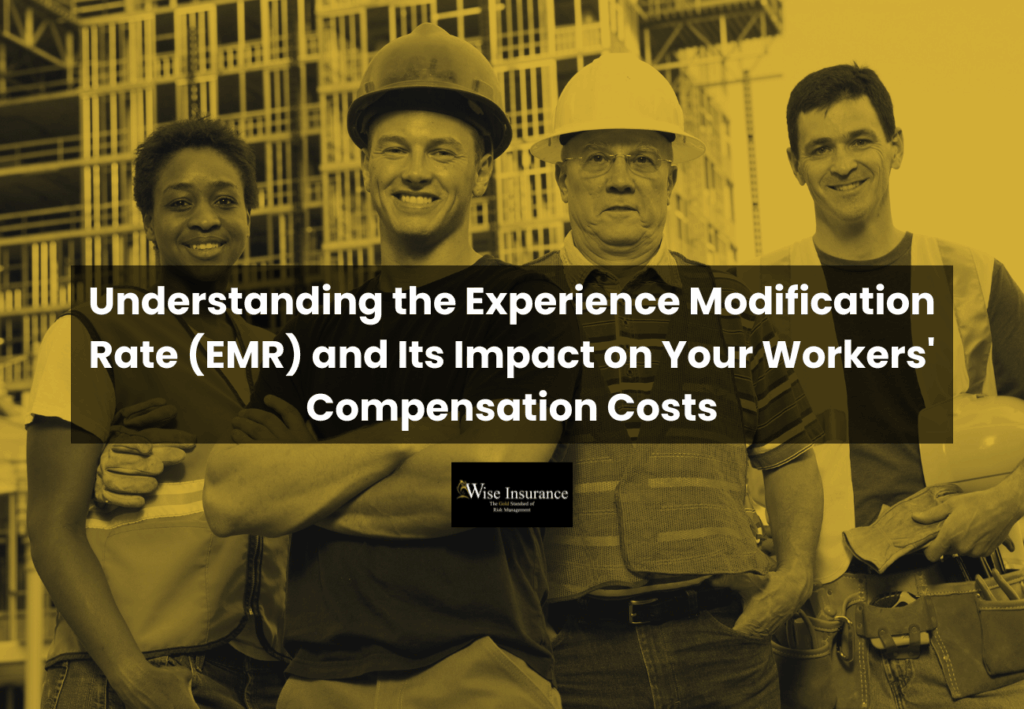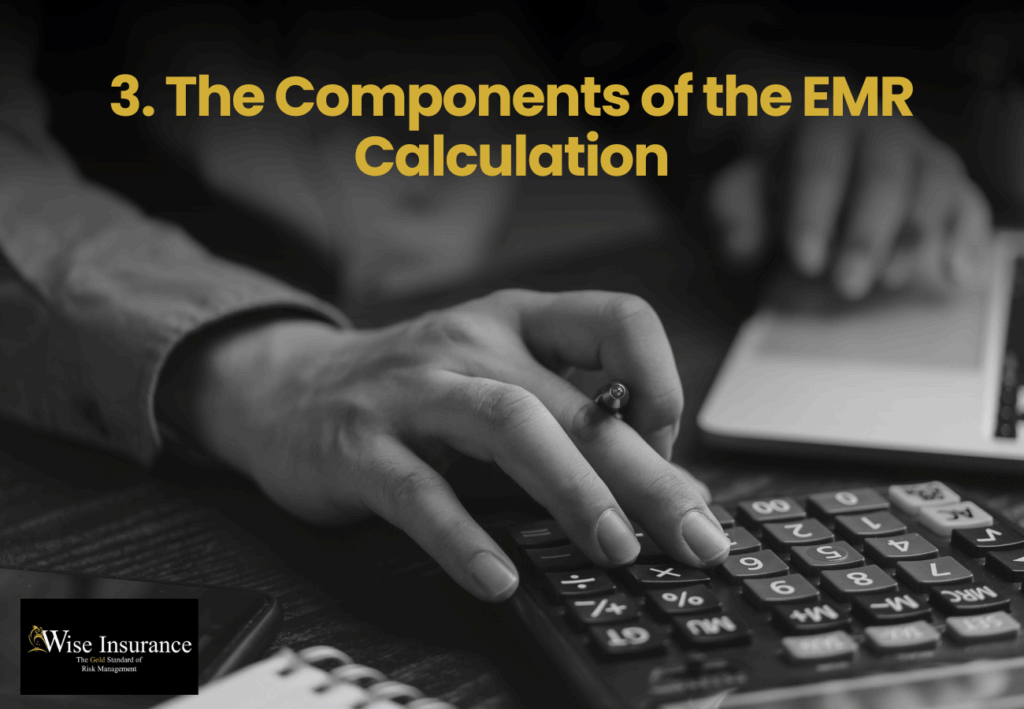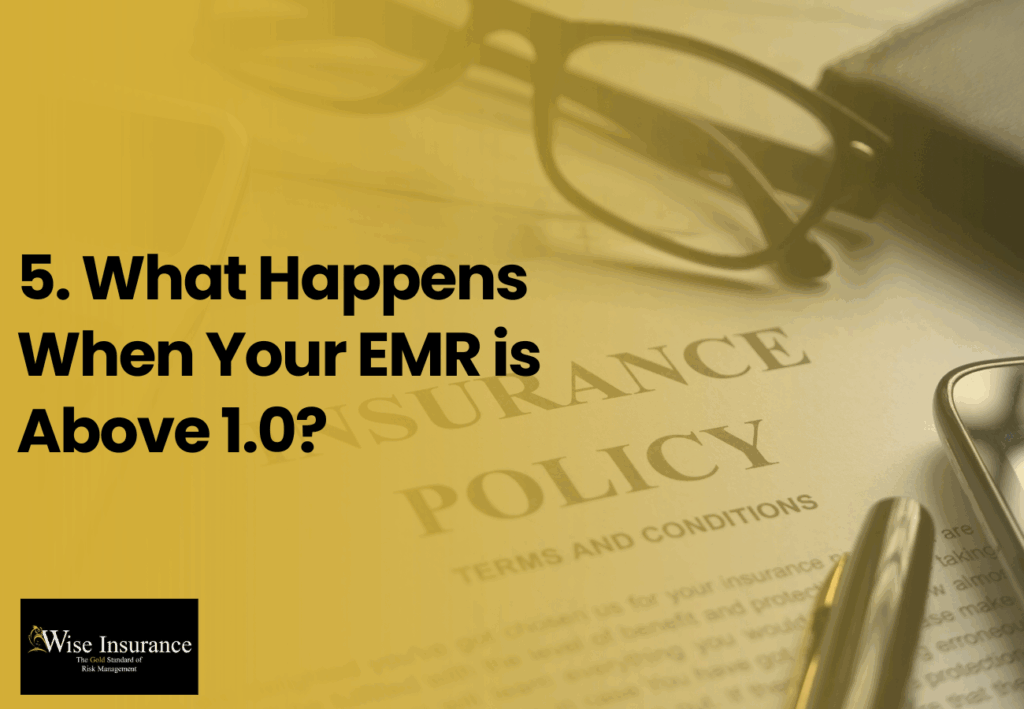
1. What is the Experience Modification Rate (EMR)?
The Definition of EMR
The Experience Modification Rate (EMR) is a numeric representation of your company’s safety record. It compares your company’s actual workers’ compensation claims to the expected claims for similar businesses. The lower your EMR, the better your safety record, which can lead to lower insurance premiums.
How is EMR Calculated?
The calculation of the EMR involves evaluating your company’s claims history. The insurance company will compare your actual losses (claims) to the expected losses for similar businesses in your industry. A high EMR means higher premiums, while a low EMR results in discounts.
Why EMR Matters for Your Business
Your EMR has a direct impact on the cost of your workers’ compensation insurance. A higher EMR leads to higher premiums, while a lower EMR can result in discounts. Understanding and managing your EMR is essential for minimizing insurance costs and improving overall business performance.
2. How EMR Affects Workers’ Compensation Costs
The Impact of a High EMR
A high EMR means that your company has experienced more claims than expected. For example, if your EMR is 1.25, you will pay 25% more for workers’ compensation insurance than a company with an EMR of 1.0. This penalty can add up, making it important to manage your safety practices.
The Benefits of a Low EMR
A low EMR means your company has a better-than-expected safety record. If your EMR is 0.82, you are in the “credit zone,” and you can receive an 18% discount on your insurance premiums. A low EMR can save you significant money on workers’ compensation.
How Wise Insurance Can Help
At Wise Insurance, we specialize in helping businesses understand and manage their EMR. By assessing your safety record and implementing strategies to reduce claims, we can help you lower your total cost of risk. A lower EMR can significantly reduce your workers’ compensation premiums, saving your business money.
3. The Components of the EMR Calculation
Actual Losses (Claims)
The actual losses are the claims your company has filed for workers’ compensation. Each dollar paid out on these claims is factored into the EMR calculation. The more claims your business has, the higher your EMR, which can increase your premiums.

Expected Losses
Expected losses are the amount insurance companies anticipate businesses like yours will pay in claims. These losses are calculated based on the industry, location, and size of your company. If your actual claims are higher than the expected losses, your EMR will rise, leading to higher premiums.
Primary vs. Excess Losses
The calculation of your EMR also considers the split between primary and excess losses. Primary losses are the direct costs associated with claims, while excess losses are the costs beyond the primary threshold. Insurance companies look at both types of losses when calculating your EMR.
4. How to Improve Your EMR and Lower Costs
Focus on Workplace Safety
Improving workplace safety is one of the best ways to lower your EMR. By implementing proper safety protocols and training employees on accident prevention, you can reduce the likelihood of claims. A safer workplace directly translates to fewer claims, leading to a lower EMR and reduced insurance premiums.
Review and Update Your Safety Procedures
Regularly reviewing and updating your safety procedures is essential for maintaining a low EMR. Consider conducting safety audits and providing ongoing safety training for your employees. By keeping safety top-of-mind, you can prevent accidents and reduce the number of claims filed.
Work with Wise Insurance to Manage Claims
If you do experience a claim, working with an experienced insurance provider like Wise Insurance can help. We can assist you in managing the claim process and ensure that your business takes the right steps to minimize the impact on your EMR. Proactive claim management can help reduce the overall cost of your insurance.
5. What Happens When Your EMR is Above 1.0?
Paying Higher Premiums
If your EMR is above 1.0, you are considered to have a higher-than-expected number of claims. This means you will likely face higher premiums for workers’ compensation insurance. For example, an EMR of 1.25 means your premiums will be 25% higher than the average business in your industry.
Identifying Areas for Improvement
When your EMR is above 1.0, it’s important to identify areas where your company can improve. This could involve reviewing your safety protocols, conducting employee training, or addressing specific risk factors in your workplace. By making improvements, you can lower your EMR and reduce your premiums.

Partnering with Wise Insurance
Wise Insurance is committed to helping businesses with high EMRs reduce their premiums. We work with companies to assess their claims history and develop customized strategies to lower their EMR. With the right guidance and proactive measures, we can help your company get back on track to lower costs.
6. How to Stay in the Credit Zone with a Low EMR
Benefits of Staying Below 1.0
Staying below an EMR of 1.0 means you are in the “credit zone” and eligible for discounts on your workers’ compensation insurance premiums. For example, an EMR of 0.82 can earn you an 18% discount. This can result in significant savings for your business over time.
Ongoing Safety Training and Education
Continuing safety training and education for your employees is crucial for maintaining a low EMR. By regularly refreshing their knowledge of safety protocols, you can prevent accidents and claims. A commitment to safety is essential for staying below an EMR of 1.0.
Regular Risk Assessments with Wise Insurance
At Wise Insurance, we offer regular risk assessments to help you identify potential hazards in your workplace. By working together, we can create a proactive plan to address these risks and prevent claims, helping you maintain a low EMR and enjoy ongoing discounts on your premiums.
7. The Wise Way to Lower Your Total Cost of Risk
Risk Management Strategies
At Wise Insurance, we provide comprehensive risk management strategies to help businesses reduce their total cost of risk. From improving safety to managing claims, we work closely with you to develop a tailored approach that lowers your EMR and reduces your workers’ compensation premiums.
Leveraging Our Expertise
With years of experience in the commercial insurance industry, Wise Insurance has the expertise to help you understand and manage your EMR effectively. We offer personalized guidance and support, ensuring that your business is taking the right steps to lower its insurance costs.
Lowering Your EMR with Wise Insurance
The key to lowering your workers’ compensation costs lies in managing your EMR. By partnering with Wise Insurance, you can take proactive steps to reduce your EMR, improve safety, and ultimately lower your total cost of risk. Let us help you make the wise choice for your business.


